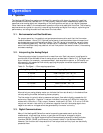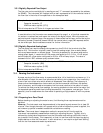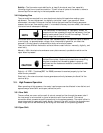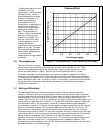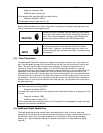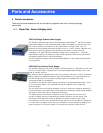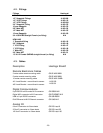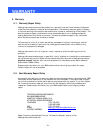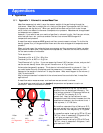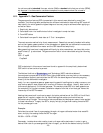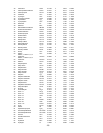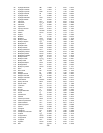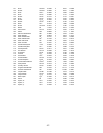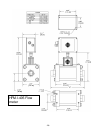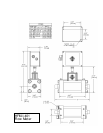
- 23 -
the units are called standard liters per minute (SLM) or standard cubic feet per minute (SCFM),
etc because it is referenced to a standard temperature and pressure when the volume is
calculated.
6.2. Appendix 2 - Gas Conversion Factors
The gas correction factors (GCF’s) presented in this manual were obtained by one of four
methods. The following table summarizes the different methods for determining GCF’s and will
help identify for which gases the highest degree of accuracy may be achieved when applying a
correction factor.
1. Empirically determined
2. Calculated from virial coefficients of other investigator’s empirical data
3. From NIST tables
4. Calculated from specific heat data at 0° C at 1 atmosphere
The most accurate method is by direct measurement. Gases that are easily handled with safety
such as inert gases, gases common in the atmosphere or gases that are otherwise innocuous can
be run through a standard flow meter and the GCF determined empirically.
Many gases that have been investigated sufficiently by other researchers, can have their molar
specific heat (C’ p) calculated. The gas correction factor is then calculated using the following
ratio:
GCF = C ’apN2
C’apGasX
GCF’s calculated in this manner have been found to agree with the empirically determined
GCF’s within a few tenths of a percent.
The National Institute of Standards[LH1] and Technology (NIST) maintains tables of
thermodynamic properties of certain fluids. Using these tables, one may look up the necessary
thermophysical property and calculate the GCF with the same degree of accuracy as going
directly to the referenced investigator.
Lastly, for rare, expensive gases or gases requiring special handling due to safety concerns, one
may look up specific heat properties in a variety of texts on the subject. Usually, data found in
this manner applies only in the ideal gas case. This method yields GCF’s for ideal gases but as
the complexity of the gas increases, its behavior departs from that of an ideal gas. Hence the
inaccuracy of the GCF increases.
Hastings Instruments will continue to search for better estimations of the GCF’s of the difficult
gases and will regularly update the list. Most Hastings flow meters and controllers are
calibrated using nitrogen. The correction factors published by Hastings are meant to be applied
to these instruments. To apply the GCF’s, simply multiply the gas flow reading times the GCF
for the process gas in use.
Example:
Calculate the actual flow of argon passing through a nitrogen-calibrated meter that reads 20
sccm, multiply the reading times the GCF for argon.
20.000 x 1.3978 = 27.956
Conversely, to determine what reading to set a nitrogen-calibrated meter in order to get a
desired flow rate of a process gas other than nitrogen, you divide the desired rate by the GCF.



